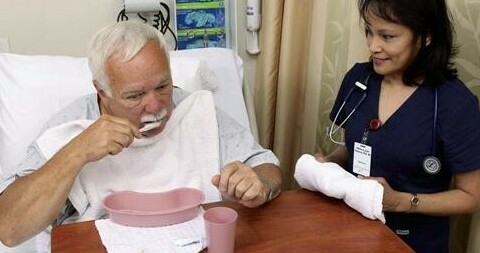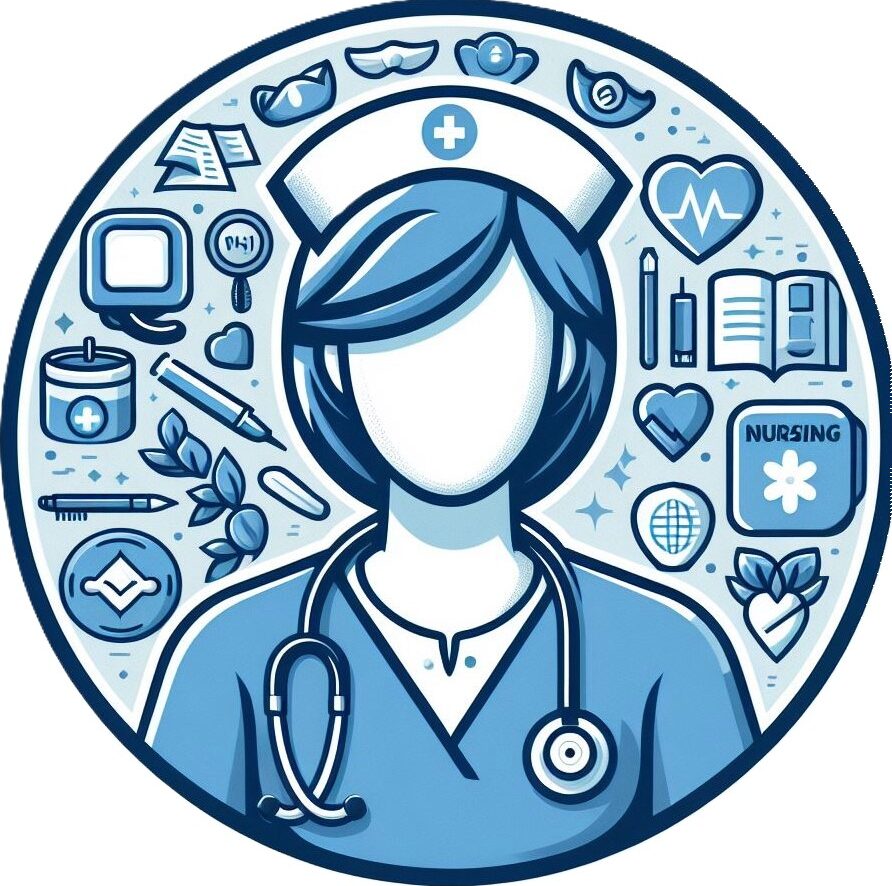 Nursing procedures are basic tasks that nurses perform to provide care for patients. There is a range of different procedures but to introduce some common procedures to ensure the well-being and recovery of patients, maintain hygiene, and monitor health conditions are all covered. For you as beginners, understanding and mastering these procedures is crucial for effective patient care. Below is an overview of some common nursing procedures:
Nursing procedures are basic tasks that nurses perform to provide care for patients. There is a range of different procedures but to introduce some common procedures to ensure the well-being and recovery of patients, maintain hygiene, and monitor health conditions are all covered. For you as beginners, understanding and mastering these procedures is crucial for effective patient care. Below is an overview of some common nursing procedures:
- Vital signs measurement
- Hand hygiene
- Medication administration
- Wound care
- Patient hygiene and comfort
- Patient mobility
- Documentation
- Patient education
Now I am going to talk about the measurement of vital signs. This is the first observation to obtain in order to gain insights into a patient’s condition.
The vital signs measurement includes Temperature, Pulse, Respiration rate, Blood pressure and Oxygen saturation.
You’re going to find out how to measure body temperature accurately, using various types of thermometers such as oral and tympanic. It is not only about reading numbers, but also about understanding what they mean for your patient’s health. For example, the person normal temperature ranges between 35.5-37.0 Celsius degree. When the temperature out of these ranges either higher or lower which requires close observations or notify the treating team according to the patient’s situation.
Let’s move to Pulse and respiration rates. Each heartbeat tells a story, and by checking the heart rate, usually at the wrist, you get a glimpse into that narrative. Likewise, counting breaths can signal if a patient is in distress, comfortable, or even improving. These make a difference in patient care.
Now, let’s talk about blood pressure and oxygen saturation. They are critical indicators of your patient’s circulatory and respiratory systems. Using a sphygmomanometer might sound intimidating, but with the right technique, you can master it. It would be similar with the pulse oximeter, a handy tool for measuring blood oxygen levels.
In the next paragraph, I am going to walk you through the next elements are Hand hygiene, medication administration and how they together play a significant role in keeping infections at bay and ensuring your patients receive the treatments they need effectively.
The Essentials of Cleanliness and Medication Delivery in Nursing
Hand hygiene is the simplest yet most effective weapon in your care to fight infections. This is mastering the art of handwashing with soap and water, which not only running your hands under the tap, but also scrubbing every finger, palms and wrists for at least 20 seconds. Think of it like a ritual to protect your patients and yourself.
Apart from soap and water, hand sanitizing is another option for hand hygiene. Using an alcohol-based sanitizer can kill germs swiftly, and you’ll want to do this frequently, especially before and after patient contact. Specifically, make yourself familiarize with 5 moments of hand hygiene is the best practice. You may worry about your dry hands due to repeatedly washing hands, you can use a sanitizer with moisturizers, or keep a lotion handy.
Wearing gloves in the appropriate patient care procedures is essential. You need to know when to wear gloves and ensure they fit correctly to prevent tears. More importantly, gloves are not a replacement of handwashing, they’re an additional layer of defense.
Next, we are mastering the important of medication administration. Oral medications may seem straightforward, but they come with their own set of rules to prevent errors. Checking your patient’s ID, the doctor’s order, and the ‘five rights’ of medication administration should become second nature. You can master your medication administration skills by exploring my previous post 7 Rights of medication administration.
What’s about administering injections or managing IV therapy? These routes are faster and sometimes more effective, but they also carry a higher risk of complications. You’ll need to be meticulous with your technique, ensure sterility, and constantly monitor for adverse reactions.
In nursing, patient safety is paramount, and correct medication administration is a huge part of that. Doing this right every time is a must.
The following section will focus on how you’re going to advance your patient care in terms of their daily comfort and mobility. It is not only meeting basic needs, but also promoting a sense of well-being and dignity among those you’re caring for.
Advancing Patient Care Through Mobility Support and Hygiene
 Moving on from the importance of cleanliness and medication, we arrive at another vital aspect of nursing care: supporting patient mobility and ensuring comfort through meticulous hygiene practices. Whether it’s assisting with daily needs or improving a patient’s ability to move around, these tasks are central to maintaining their dignity and speeding up recovery.
Moving on from the importance of cleanliness and medication, we arrive at another vital aspect of nursing care: supporting patient mobility and ensuring comfort through meticulous hygiene practices. Whether it’s assisting with daily needs or improving a patient’s ability to move around, these tasks are central to maintaining their dignity and speeding up recovery.
Assisting a patient with their personal grooming needs is more than just a routine task – it’s an integral part of preserving skin integrity and promoting a sense of wellbeing. Bathtime can be a therapeutic interaction where nurses ensure patients remain free from the discomforts that can arise due to immobilization, such as pressure ulcers and infections. Oral care is safeguarding against the unwanted complications that could otherwise derail a patient’s recovery.
Bed making is also critical, a well-made, comfortable bed does wonders for a patient’s morale and comfort. It’s a simple, yet hugely significant way to enhance a patient’s hospital experience and encourage better rest, which is essential to healing.
Wound care is an area where precision meets compassion. Cleaning wounds with antiseptic solutions, all while ensuring the process is as pain-free as possible. Mastering the technique of dressing changes also falls into a nurse’s skillset and is essential for promoting healing and staving off infection. It is crucial to know what type of wounds and which appropriate dressing types to optimize the wound healing process.
Furthermore, nurses play a dynamic role in patient mobility. From helping patients switch from bed to chair to supporting their first postoperative steps, a nurse’s guidance can be the key to preventing complications such as deep vein thrombosis and fostering quicker recovery. If you are in doubt how to assist the patient mobility, consult with physiotherapy on site to ensure you offer a safety transfer technique.
After providing all above basic care, documentation and the empowering process of patient education is last but not least. Both are cornerstone practices that ensure the sustainability of excellent patient care.
Empowering Patients and Ensuring Safety Through Education and Documentation
I can’t deny that documentation and patient education are two aspects of nursing that are as pivotal as the clinical procedures themselves. Documentation serves as the narrative of a patient’s healthcare journey. Accurate charting, which includes recording patient data and care activities, is crucial in ensuring continuity of care and legal documentation. Electronic Health Records is now even supporting the documentation far more efficient and clear transfer of information.
Patient education, on the other hand, is an empowering tool. Health teaching helps patients understand their conditions and the corresponding self-care practices. It is always truth that well-informed patients are more likely to comply with treatment regimens and manage their health effectively post-discharge. Discharge instructions equip patients with the knowledge needed to avoid complications and recognize when they may need to seek further medical attentions such as contact their GP or visit the emergency when required.
As beginning nurses, educating a patient or documenting care is not always perfect. Choose appropriate strategies and approaches that suit you and you can always improve your methods in a later time. As much as my effort putting in this article, as beginning nurses, you can embrace the significance of these tasks to create a safe, informed environment for your patients.
Master these procedures with attention to detail, practice proper techniques diligently, and maintain a compassionate approach to patient interaction. You not only provide high-quality care and patient safety, but also enhance your own proficiency and confidence as a nursing professional.
As usual, I am always here – you are welcome drop down into the comment below, I will get back to you in the soonest.

Hello. I enjoyed reading this because I myself am getting into medical device reprocessing technician and people have no idea the amount of time and effort that goes into cleaning and sanitizing in hospitals. And I guess it’s kind of in relation to what you’re talking about here. But it’s more about the patient for this. I was just wondering when you talk about personal needs of the patient. What’s the best way to do this when everyone’s so different?
Hello Jake,
Thank you for your insightful question and for your interest in patient care, especially from the perspective of a medical device reprocessing technician. Your role is definitely crucial in maintaining a safe and sterile environment, which directly impacts patient outcomes.
When talking about the personal needs of patients, it’s vital to understand that each patient is unique, with individual preferences, cultural backgrounds, and specific health requirements. Personally, I believe the below practices are essential to deliver to these diverse needs.
Firstly, I would conduct a thorough assessment and communication. I would begin with an intensive assessment of the patient’s physical, emotional, and psychological needs. The key is open communication to ask about their preferences, routines, and any specific needs. Next, I would develop a personalized care plans for this specific patient, this includes dietary restrictions, mobility assistance, personal hygiene preferences, and any cultural or religious considerations. Then respect and empathy is a must, so the patient can feel heard and valued. After that, be flexible and adaptable in the approach as every patient is different.
When I understand what my patient specific needs is, I can educate and involve her/him in the care plans and involve in decision-making processes. Then, I would work collaboration with other healthcare professionals to
provide comprehensive care in order to meet this patient needs.
Lastly, I would continuous evaluation to reassess the effectiveness of the care plan and make adjustment if needed.
And Jake, your role in maintaining a clean and sanitized environment is a vital part of this holistic approach to patient care.
Thank you for your comment, please feel free to drop me a line if you would like to discuss any further questions.
Cheers,
Jen